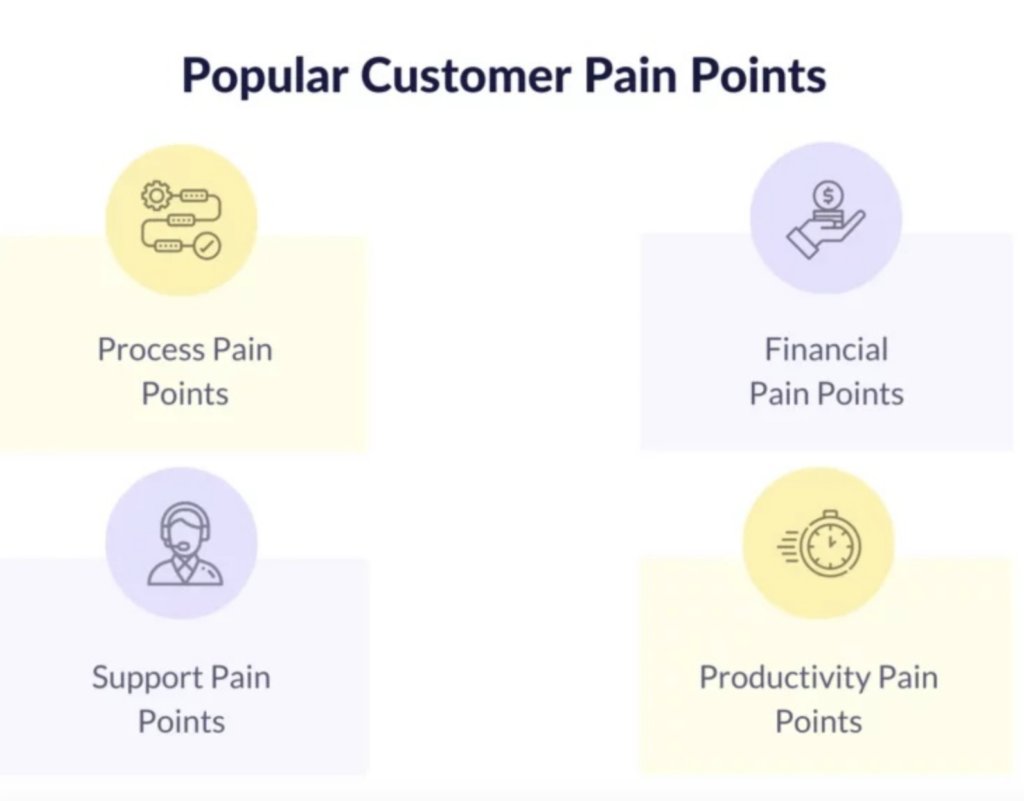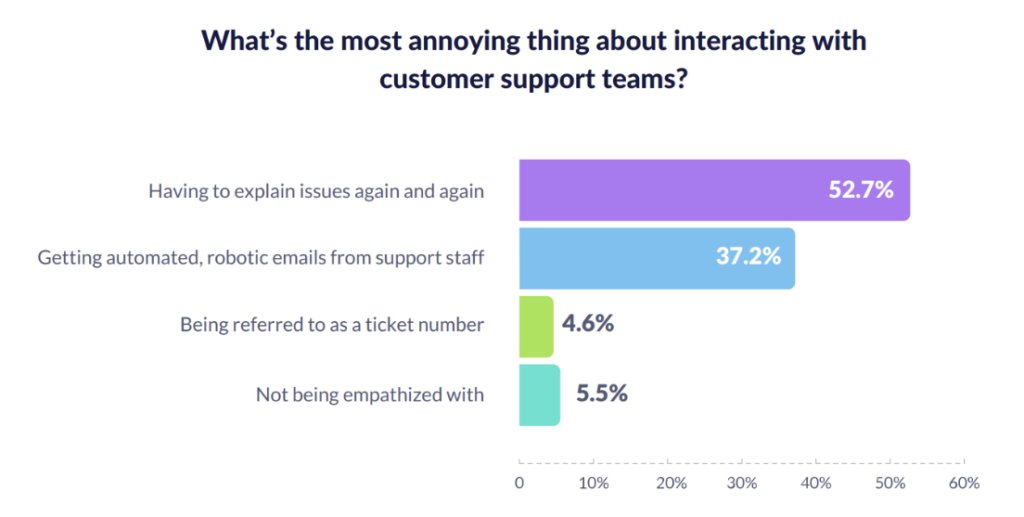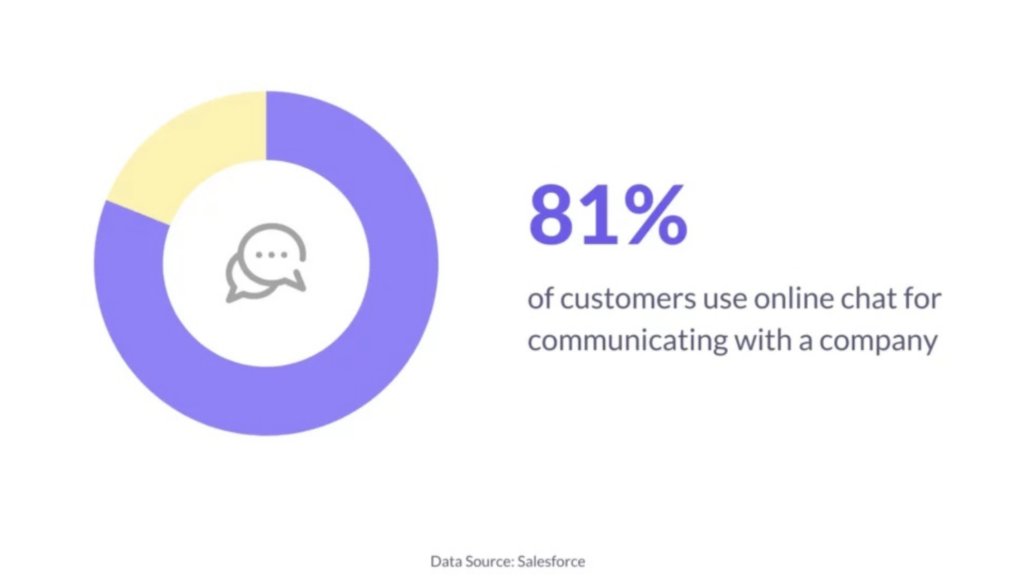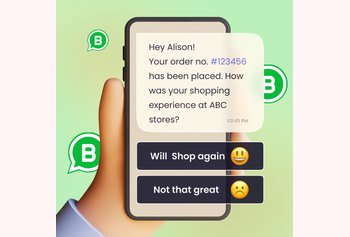Customer Pain Points: How to Identify and Solve them?

Table of contents
A critical element in operating a successful business lies in identifying and resolving the pain points your customers face. These pain points are not just difficulties encountered during interactions with your business; they are broader issues or challenges that customers hope your business will help solve.
By comprehensively understanding these pain points, you can develop solutions that address the root of your customers’ challenges. This insight is key not only to converting more leads into customers but also to potentially attracting customers from your competition.
Neglecting to recognize and address these pain points can lead to subpar customer service, resulting in customer attrition and a tarnished brand reputation. A study by Hiver highlights the urgency of this issue, noting that 30% of consumers are unwilling to give brands a second chance after a poor customer service experience.
This article aims to categorize various customer pain points and provide you with practical, actionable strategies to:
- Identify challenges within your business.
- Implement solutions to effectively address these challenges.
Table of Contents
- What are customer pain points?
- Types of Customer Pain Points?
- How do you identify customer pain points?
- How do you overcome customer pain points?
- Examples of Common Customer Pain Points and Solutions
- Turn Your Customer Pain Points into Opportunities for Growth
- Frequently Asked Questions (FAQs)
What are customer pain points?
Customer pain points refer to specific problems that prospective or current customers of your business are experiencing. These pain points are often diverse and can include issues related to your products, services, customer experience, or broader challenges in their personal or professional lives that your business could help solve.
For example, a common customer pain point might be high cost. If customers feel that the price of a product or service is too high, they may be hesitant to purchase or feel dissatisfied with the value they’re getting. Addressing this pain point could involve offering more competitive pricing, demonstrating better value through quality or features, or providing flexible payment options.
Types of Customer Pain Points?
There are four main, well-researched customer pain points. Let’s take a look at each one in depth:

1. Process pain points
Process pain points are problems in your internal processes that enable your business to interact with customers. These refer to cases in which it takes too long to get a response, causing potential customers to lose interest and go elsewhere.
Customer pain points related to processes include:
- Tracking and delivery issues
- Anything that doesn’t work–for example, the item won’t add to the cart
- Too many redundant steps in the customer journey
- Waiting in queues for answers to questions
- Poor communication between teams
- Difficulty in connecting to the correct department
2. Financial pain points
Most customers pay attention to price, value, and the potential to save money. In fact, according to a survey by BrizFeel, 36% of consumers say that price is one of the most important factors that drive customer loyalty.
Financial customer pain points come from the customers’ goal to cut back on the money they’re spending on your service or product. In other words, these are customer problems that involve money.
Money-related customer pain points include:
- Expensive subscription plan or membership fee
- No transparency of the final cost. For example, adding hidden fees at checkout causes 16% of people to abandon their online carts due to not seeing or calculating their total order cost up-front, as per Baymard research.
- Overpaying for equipment, software, or tools
- Less browsing and spontaneous purchases, more buying in bulk
3. Customer support pain points
According to one of Hiver’s research reports, 66% of customers think a company’s reputation for customer service is a critical factor when making a purchase decision. If your customers don’t get the help and support they need when looking for a solution, rest assured they’ll soon be looking for an alternative elsewhere.
Customers lose trust when they encounter customer service staff who do not understand their products, services, or the importance of contributing to a positive experience.
According to Hiver’s research results, 1 in 2 people say the most annoying part of bad customer support is explaining their problem multiple times to different customer support agents.

Customer support pain points come from a failure to help your customers with their product-related questions throughout their customer journey or the sales process.
Examples of this customer pain point include:
- Having to repeat information when contacting support. Customers get frustrated when they provide information, and it isn’t passed on to the appropriate person.
- Being unable to find answers on their own. Many customers ideally want to resolve their own problems. Frustration arises when answers can’t be found in a self-service channel of their choice.
- Not knowing who to speak to in the event of a problem with your product or service
- Lack of product knowledge in your support team
- Lack of information available about your product or service
4. Productivity pain points
Customers don’t want to waste time using your services or products. They want to use their time as efficiently as possible.
Understanding productivity pain points can help you offer a solution that balances time and convenience. That means eliminating some of these inefficiencies:
- Outdated processes and redundant steps in the buying process
- Complicated checkout processes
- Forms that don’t work with your customers’ systems
- Not providing add-ons to boost your customers’ efficiency with your product (like, a mobile app for your business or access to user/onboarding guides to SaaS products).
How do you identify customer pain points?
Now that we know what the different kinds of pain points are, we need to work out how to identify them. Take a look at these tips that help you recognize them.
1. Observe your competitors
Growing your business without monitoring your competitors is a high risk.
Closely observing the customer pain points of your competitors will help you understand what works and what doesn’t work for your business. Observing your competitors’ social media marketing strategy, for example, will help you come up with ideas and strategies that can strengthen your market position.
Also, monitor third-party review sites to find out what people are saying about your competitors. What do they like? What do they dislike? Having this information will help you decide which areas of your product or service you need to focus on.
2. Use live chat
According to a report by Salesforce, 81% of customers use online chat to communicate with a company.

A large number of customers prefer using live chat to communicate their needs
A good live chat option allows customers to share their pain points instantly. It also gives an opportunity for your business to respond immediately and gather data on common pain points – all in real-time.
Using live chat on a company website is also an excellent passive way of gathering data regarding customer pain points. While there’s no way to measure exactly what a customer is seeking when they’re on your FAQ page, the queries they ask on live chat can be collected and studied to understand customer needs and pain points.
3. Regular check-ins with your sales, marketing, and support teams
Customers interact with multiple teams across their journey with your brand. So, it’s only fair that you collect information about their pain points from a range of sources like marketing, customer service, and sales teams.
Doing this will help you collect specific data points such as:
- The frequency of a particular problem
- Whether the pain point occurs at a certain point in the year
- Whether particular segments of customers have specific problems
- How these pain points are usually resolved
4. Implement ‘Thank You’ page surveys
Using customer surveys to uncover pain points is standard practice for marketing and customer service teams.
However, traditional methods of sending surveys and questionnaires by email are plagued by two common problems: inaccurate or missing information and low response rates.
Implementing thank you page surveys, on the other hand, is a great way to increase customer response rates. Customers who’ve just bought from you are much more likely to comply with another request – filling out a survey, in this case. See how Harry’s does this efficiently on their thank you page:
Here’s the thing:
Your thank you page has an effective ‘open rate’ of 100%. Every shopper sees it – this is not the case with your traditional email survey. The more impressions you get, the more responses you will collect – leading to more pain points identified.
A thank you page captures your customers’ thoughts and feelings immediately after the checkout. The shopping experience is still fresh in their minds, which means you’ll get more accurate information about your customer’s pain points.
5. Conduct market research and surveys
According to a report by Microsoft, 89% of customers view brands favorably if they proactively invite and welcome customer feedback.
Offering customers an incentive to complete surveys helps increase potential responses. For example, you could offer discounts on products or lower subscription charges for a specific duration.
Ensure to include open-ended questions in your surveys. Questions like: what communication channels do you prefer? Or what suggestions do you have to improve our customer service?
Ask the right questions, and don’t make them too specific.
Questions that are too specific usually end up with businesses losing out on possible breakthroughs and with the same answers that only cater to assumptions and not to real problems.
How do you overcome customer pain points?
Here’s how to help customers overcome their pain points before they switch brands.
1. Prioritize resolving customer pain points that are easier to fix
Sounds simple, but this is one strategy that is highly effective!
It’s likely you will encounter many pain points that are relatively easy to fix. Issues like a broken link, a rude employee, or long call wait times can all be addressed with relative ease, demonstrating your company’s commitment to improving customer experience.
There may be instances where mistakes are made, or customers have misunderstandings. A salesperson might promise an unrealistic shipping date or quote the wrong price, or your product or service quality might not meet their high expectations.
To manage these situations effectively, ensure customer support reps have access to clear procedures for escalation management. Knowing how to properly escalate concerns builds customer confidence and trust. In fact, a report by Khoros indicates that 83% of customers feel more loyal to brands that respond to and resolve their complaints.
Here are actionable steps you can take to address customer pain points:
- Review customer service calls, emails, and feedback to identify common issues.
- Provide regular training to staff on customer empathy, problem-solving, and product knowledge.
- Implement strategies to reduce wait times in calls or email responses.
- Develop and communicate clear procedures for escalating customer issues within your team.
- Establish a system to follow up with customers after their issue has been resolved to ensure satisfaction.
Once you’ve implemented solutions and made the necessary changes, the next steps are to measure improvement and continue monitoring. The true indicator of whether the customer pain points are resolved will be evident in the improvements seen in the customer experience.
2. Improve processes and monitor changes
With robust data about your customers’ pain points gathered from various sources, it’s time to use this information to enhance your internal processes and systems.
For instance, if a common customer pain point is the lack of online user guides, consider enhancing your website to include easily accessible information about your products or services. However, updating your processes is just the first step. It’s crucial to monitor and track these improvements to ensure that they are effectively resolving customer pain points.
Here are some steps to effectively improve processes and monitor changes:
- Based on the data, pinpoint specific areas in your processes that need enhancement.
- Create a detailed plan for updating these processes. This could include creating new content, improving product features, or enhancing service protocols.
- Roll out the improvements in a structured manner, ensuring all relevant team members are on board and trained as needed.
- Establish metrics or KPIs to measure the effectiveness of the changes made.
- Schedule periodic reviews to assess the impact of the changes. Utilize customer feedback to gauge success and identify areas for further improvement.
- Foster a culture of continuous improvement within your organization, encouraging staff to seek and implement changes that enhance customer experience.
3. Offset negative experiences with positive experiences
Offset customer pain points by providing positive customer service experiences. In fact, according to a Qualtrics research report, nearly 80% of customers will forgive a bad experience if they rate the service team as very good.
Your customer may post a negative comment on an independent review site. Respond quickly by acknowledging their experience and offering to follow up to remedy their pain point. Offsetting negative comments with positive experiences can show that you take their feedback seriously and take action to improve their buying experience.
Similarly, customers may have had a negative experience with a competitor, and their pain point was unresolved. Provide a different experience by showing them how you listen carefully to their pain points, take action to solve them, and let your customers know – all as standard practice!
It’s not just the customer service team that can benefit from this strategy. Your marketing can, too. Share the pain points and feedback with your marketing team, and they can address this in their marketing communications. The end result? Better, relevant marketing messages that show new prospects how your product solves their problems.
4. Have a customer follow-up strategy
A robust customer service strategy is essential in enhancing your business brand. While many businesses focus their marketing efforts on attracting new customers, it’s equally important to consider what happens after acquiring them.
Good customer service extends beyond the sale and should be maintained even after a transaction is complete. Customer follow-up is a crucial part of your feedback loop. It’s about being proactive in your support strategy, using follow-ups to ensure customer satisfaction, and demonstrating that you truly care about their experience.
Here’s a template for a follow-up email to help you get started:
Subject: We’d love to hear your thoughts!
Hi [Customer’s First Name],
I hope you’re enjoying your [product/service]! At [Your Company], we’re always working to make sure everything is just right for you.
It would mean the world to us if you could take a minute to share how things are going with your recent purchase. Your feedback helps us get better at what we do and deliver the experience you deserve.
[Link to Feedback Form/Survey]
And if there’s anything else we can do for you, don’t hesitate to reach out. We’re always here to help!
Thanks so much for choosing [Your Company] – we can’t wait to serve you again.
Best,
[Your Name]
[Your Position]
[Contact Information]
By using this follow-up email template, you can effectively communicate with your customers post-purchase, showing them that their opinions and satisfaction are important to your business.
Examples of Common Customer Pain Points and Solutions
Now that we know how to identify the customer pain points and the best practices to resolve them, let’s walk through common examples of these pain points:
1. High pricing
Customers often feel that products or services are priced too high for the value they’re receiving. Businesses often have to deal with this pain point while trying to convert leads to their customers.
Solutions:
- Offer flexible pricing plans or tiered subscriptions to suit different budgets. For instance, Hiver offers a different pricing plans for their customers. This way, prospects can easily choose the package that suits their demands and budget.
- Highlight value-added features in your marketing materials – ex: monthly newsletters and sales calls to justify the price.
- Consider offering discounts or payment plans to ease the financial burden. A great example of this is how many companies run Black Friday offers, slashing prices or providing special payment plans to make their products more accessible.
2. Long wait times for customer support
Long queues to get help are a common pain point that frustrates customers and can lead them to abandon your service.
Solutions:
- Implement live chat or AI chatbots for quicker responses.
- Optimize your customer support team by providing training on quick problem-solving techniques.
- Use a help desk solution that helps you prioritize urgent issues, automate query assignments and reduces wait times.
3. Complex checkout process
A complicated checkout process is a pain point that often results in cart abandonment.
Solutions:
- Simplify the checkout process by reducing the number of steps.
- Offer multiple payment options to cater to different customer preferences.
- Implement features like auto-fill and guest checkout to speed up the process.
4. Unclear product or service information
Customers may be unsure about product specifications, causing them to hesitate or abandon the purchase altogether.
Solutions:
- Provide detailed product descriptions, videos, and customer reviews on your website.
- Offer live chat support during the browsing process to answer questions in real-time.
- Use email marketing to educate your audience on product benefits and features.
5. Difficulty in navigating the website
Customers get frustrated when they can’t easily find what they’re looking for on your website.
Solutions:
- Redesign your website with intuitive navigation and clear categories.
- Use a search bar with predictive text to help customers find products faster.
- Perform regular UX audits to identify areas for improvement.
Turn Your Customer Pain Points into Opportunities for Growth
Customer service plays an important role in overcoming pain points.
Customer service software like Hiver can make the process of customer service follow-up really easy. It has features like customer satisfaction (CSAT) surveys, email templates, and the ability to personalize follow-up emails at scale.
Never make assumptions about what you think your customer’s pain points are. When your business can find a way to identify and tackle customer pain points, you’ll succeed in keeping your current customers happy and winning over prospective ones from competitors.
Solutions like Hiver can help with this. They allow support teams to communicate seamlessly with customers, truly understand their pain points, and develop stronger customer relationships.
Want to learn more about our unique solution? Try Hiver free for 7 days. Or, if you are a start-up, you can apply for Hiver’s Startup Program and avail of free access for six months and discounts thereafter.
Frequently Asked Questions (FAQs)
- What are customer pain points?
Customer pain points are specific problems or challenges your customers experience during their journey with your business. These can range from high prices and poor customer service to complicated processes or unclear product information. - Why is it important to solve customer pain points?
To improve customer satisfaction and enhance customer loyalty. By resolving customers’ issues, you not only keep them happy but also prevent them from moving to competitors. Solving pain points can also boost your brand’s reputation and increase sales. - How do I identify customer pain points?
There are several ways to uncover customer pain points:
– Observe competitor reviews and social media to see what customers complain about
– Use live chat to engage directly with customers and get real-time feedback.
– Conduct surveys or interviews with your customers.
– Check with your sales and support teams for common issues your customers encounter. - What’s the best way to address customer pain points?
Start by tackling the easy-to-fix pain points first. For example, long wait times or broken website links are quick wins that show customers you care. Then, gather data from customer interactions, surveys, and feedback to prioritize bigger issues and create long-term solutions.

































